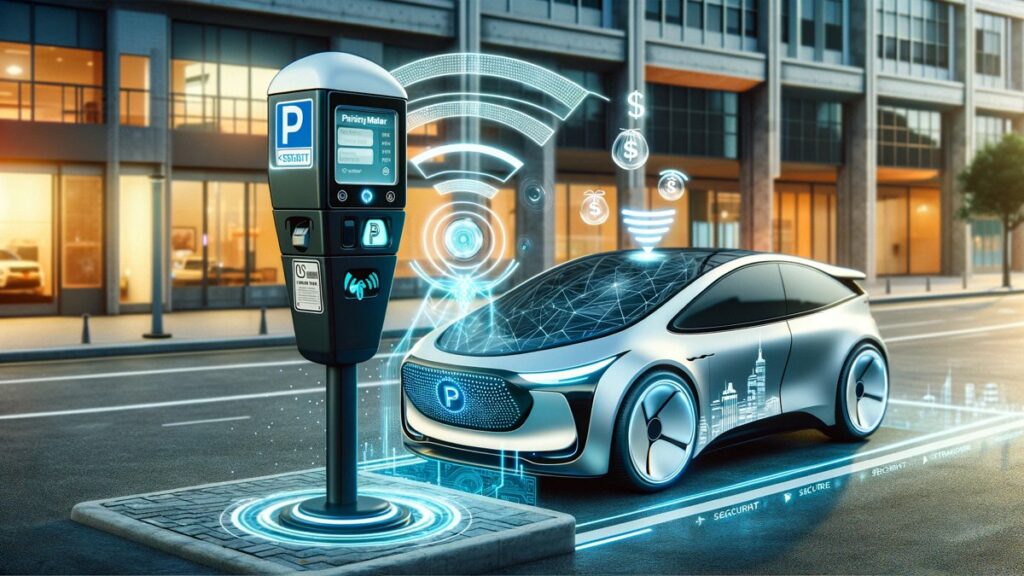With so many iterations of IoT: AIoT, IoUT, IoTM etc., it can be hard to keep up. Yet one iteration of the Internet of Things would not just open up another industry of focus for the technology, but could change the dynamic of how IoT systems interact, and provide a way for not just an exchange of data, but monetary transactions, to occur between suitable devices.
Enter the Economy of Things (EoT). As mentioned above, EoT represents a significant evolution in the digital technology landscape, and means machines, vehicles, and devices become active economic agents, working on behalf, but separately from their owner.
EoT examined
EoT’s history is intertwined with the development of IoT, where initially, the focus was on enhancing connectivity and communication between devices. Yet, the leap to EoT was catalysed by advancements in Blockchain technology – popularisied and refined by the dawn of cryptocurrencies – and AI.
How EoT is enacted in everyday life works a little like this: imagine a smart car navigating to an available parking spot using a city’s interconnected smart parking system. Upon arrival, the car automatically communicates with the parking meter using IoT technology, initiating a secure, Blockchain-based transaction. The parking session begins, and payment is automatically calculated and transacted from the car’s digital wallet to the parking meter’s wallet, based on the duration of the stay. This process is entirely automated, with the transaction being encrypted and recorded on a Blockchain ledger, demonstrating a seamless, efficient, and user-friendly interaction between smart devices in everyday tasks like parking.
IoT devices in this scenario are equipped with digital identities and wallets, allowing them to independently perform economic activities. These identities are registered on the Blockchain, which records the transaction between devices by providing a decentralised and tamper-proof ledger. The Blockchain, through things like smart contracts, also ensures the details of the transaction have to be met before funds are exchanged, but once met, are done automatically, requiring no outside oversight and facilitating seamless interactions across various IoT applications.
With the latter introduction of AI into this system, it empowers devices like smart parking bays, with the ability to analyse data, learn from interactions, and make autonomous economic decisions – for instance, increasing the cost of parking bays in peak hours.
Implementation EoT
As smart cities continue to develop, the implementation of EoT becomes increasingly integral in managing the vast network of interconnected devices. For instance, in a smart city, an IoT-enabled vehicle could negotiate parking fees with a meter, purchase electricity from a charging station, or pay tolls without human intervention, all enabled by the EoT framework.
The key to this seamless integration lies in creating a unified platform where all these devices can communicate and transact securely. This would require the establishment of standard protocols and interfaces that ensure compatibility and interoperability among diverse IoT devices.
Moreover, as the number of IoT devices increases exponentially in smart cities, there are significant considerations regarding network capacity and security. The network must be robust enough to handle the massive influx of data from millions of devices, necessitating the deployment of advanced technologies like 5G, which offer greater bandwidth and lower latency.
Additionally, the security of these networks becomes paramount, as the financial and personal data involved in EoT transactions are highly sensitive. Implementing end-to-end encryption, regular security audits, and advanced cybersecurity protocols is essential to protect against data breaches and cyber-attacks.
Industry efforts towards EoT
Bosch, in partnership with Dapps company Peaq Network, has been a frontrunner in demonstrating EoT’s potential. At IAA Mobility in Germany, they showcased a system integrating IoT with Blockchain for decentralised, autonomous transactions. Their focus was on a peer-to-peer parking and charging scheme, where vehicles interact autonomously with charging stations and parking infrastructure. This system, supported by the German government, leverages ‘moveIDs’ from Peaq Network’s ecosystem, serving as self-sovereign identities for vehicles on the Blockchain.
Vodafone is one of the main players making strides in EoT. Having established itself as a frontrunner in IoT, it is now progressing towards EoT. Their Digital Asset Broker platform, launched in early 2022, uses Blockchain to authenticate devices and enable them to trade data and currency. This platform is a cornerstone of Vodafone’s strategy to facilitate EoT transactions, such as between EVs and charging stations. Vodafone’s venture with Sumitomo, forming a new EoT-focused business named Pairpoint, further underscores their commitment to this emerging field. Pairpoint integrates Vodafone’s DAB with Sumitomo’s expertise, aiming to enable autonomous transactions between various connected devices.
Partnerships with companies like Aventus Networks and strategic alliances with Blockchain platforms like Polkadot – aimed at enhance security and developing smart contract technology – are also instrumental in expanding EoT’s scope. These collaborations are not only enhancing the security and reliability of transactions but also exploring use cases beyond the automotive industry, such as aviation and logistics.
EoT on the move
The potential of EoT is vast, with STL Partners predicting that by 2030, nearly 3.3 billion devices will be capable of EoT transactions. This growth is expected to revolutionise industries like transportation, logistics, and energy, particularly with the proliferation of smart grids and connected vehicles. However, challenges remain, including ensuring data privacy, interoperability between diverse systems, and the development of regulatory frameworks for these new forms of transactions.
But by enabling devices to perform autonomous economic activities, EoT is poised to become a pivotal element in the future of digital commerce, and even a core facet of the yet realised but much coveted dream of a fully developed smart city.
There’s plenty of other editorial on our sister site, Electronic Specifier! Or you can always join in the conversation by commenting below or visiting our LinkedIn page.
